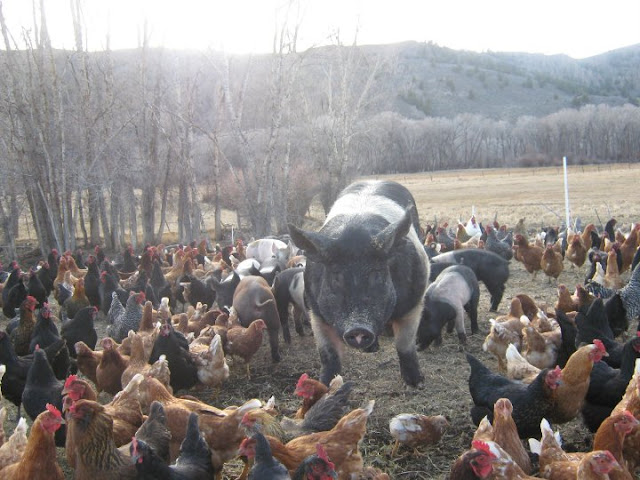Friday, August 26, 2011
Local food
I just read an interesting article about cities and the local food movement. The author asserted that the local food movement will reduce environmental impacts from transportation and can be a huge economic driver for communities. Cieslewicz says:
"... one of the most effective things governments and citizens can buy locally is food. There’s no better way to reduce your carbon footprint than to buy locally produced food because the amount of fossil fuel required to fly your tomato in from California is extraordinary. When you add it up for all the food a family consumes in a given week, eating locally is the single best thing we can do to fight global climate change."
While I agree that purchasing food locally and supporting local industry is critical to creating sustainable communities, I disagree that it is the single best thing we can do to fight climate change. Studies have shown that transportation for food is actually a small component of the carbon footprint of food. The large carbon impact of food comes from the way agriculture operates. Feed lots, large-scale (standard and organic) operations have huge impacts on the carbon footprint of food. When we talk about purchasing food locally, it's important to be honest about it's impacts--it's a great thing but it won't solve climate change. Local farms and ranches may be operating in such a way that their carbon footprint is reduced because of the way crops and animals are managed and the soil and water resources are addressed.
The local food movement can create healthier communities and create an economic driver that may be sustainable over time. Cieslewicz goes on to say:
"In a similar way, the big national food distribution system just isn’t set up to get local produce to local markets in a way that’s big enough to make a dent in the market. So we need things like local food warehouses with their own distribution systems. We need more community gardens where local residents can grow their own food and more community kitchens where they can learn how to turn all that production into meals and maybe even businesses. And we need more community supported agriculture, where city residents can buy a membership share in a local farm and get a box of fresh produce or meat delivered to them weekly."
This is the most important point of the article. We, as planners, need to assist in setting up the framework and infrastructure to enable local food movements. This may include partnering with agricultural extension offices, the Natural Resource Conservation Service and the local agricultural community to identify barriers to local food distribution. We can also work together to identify resources that are already in place and may be under-utilized. Local food is great and offers many benefits to local communities. Finding ways to take advantage of those opportunities should be at the forefront for planners.
In my community, we have a local ranch that has created a meat CSA. Subscribers can get 5-10 pounds of assorted meat per month. They also have egg, milk and yogurt subscriptions. During the summer months when the ranch has extra they'll sell it at the farmer's market. This has been a great community resource that allows citizens to get an up close view of a working ranch.
**All photos from Parker Pastures (parkerlandmanagement.com)
Subscribe to:
Post Comments (Atom)


No comments:
Post a Comment